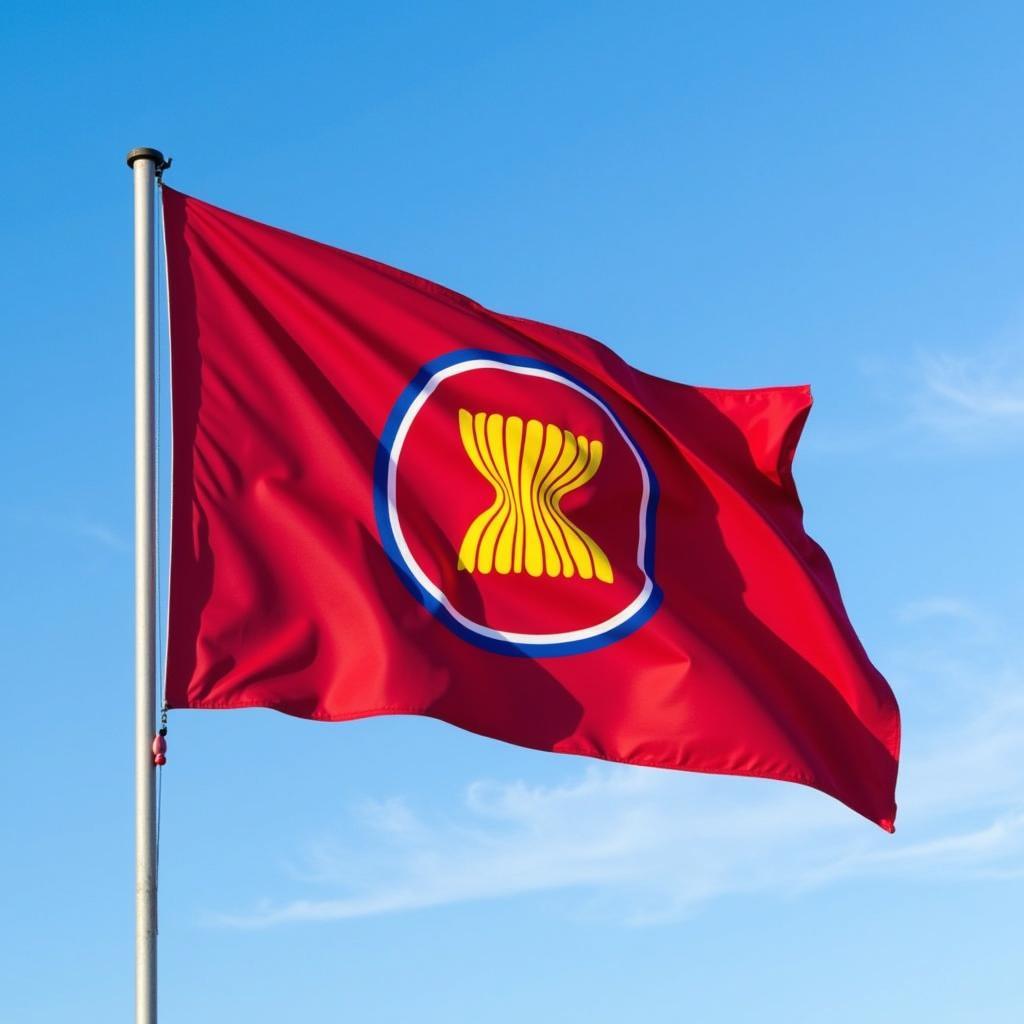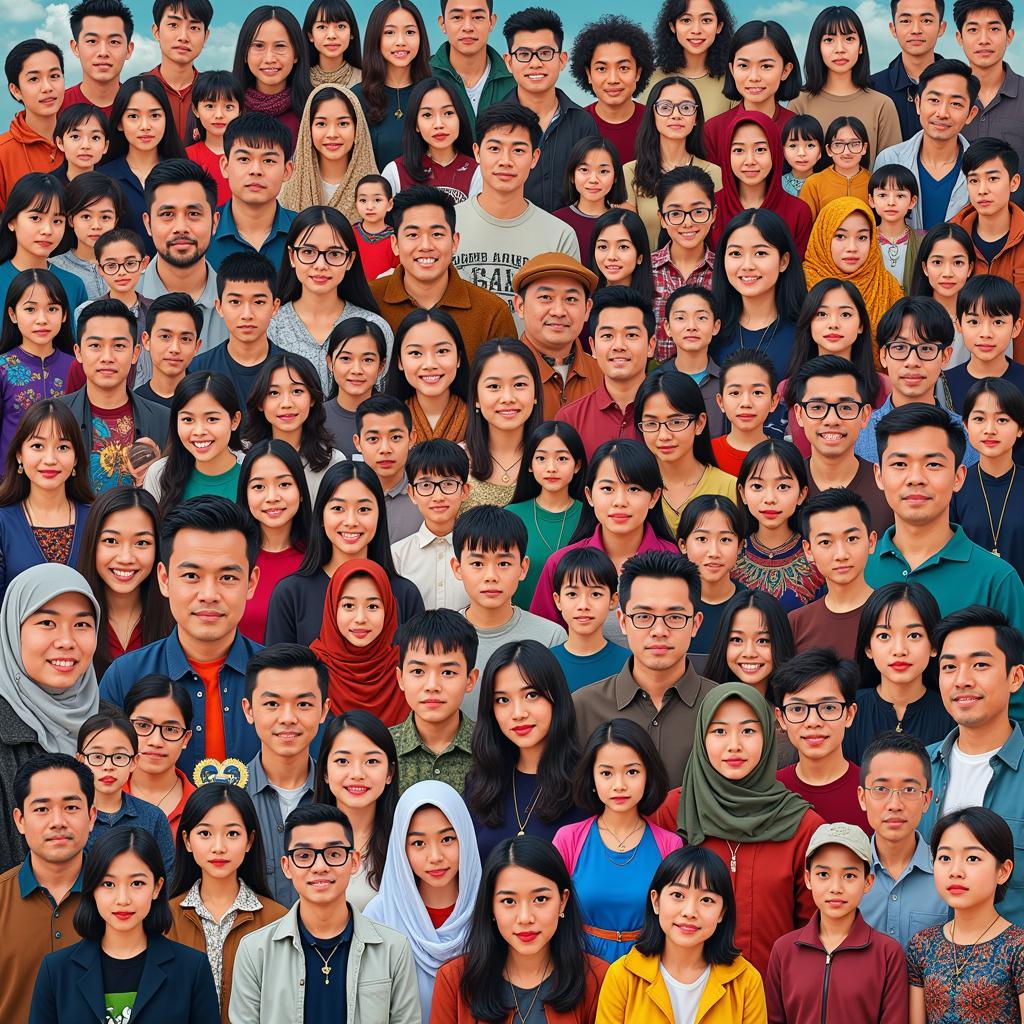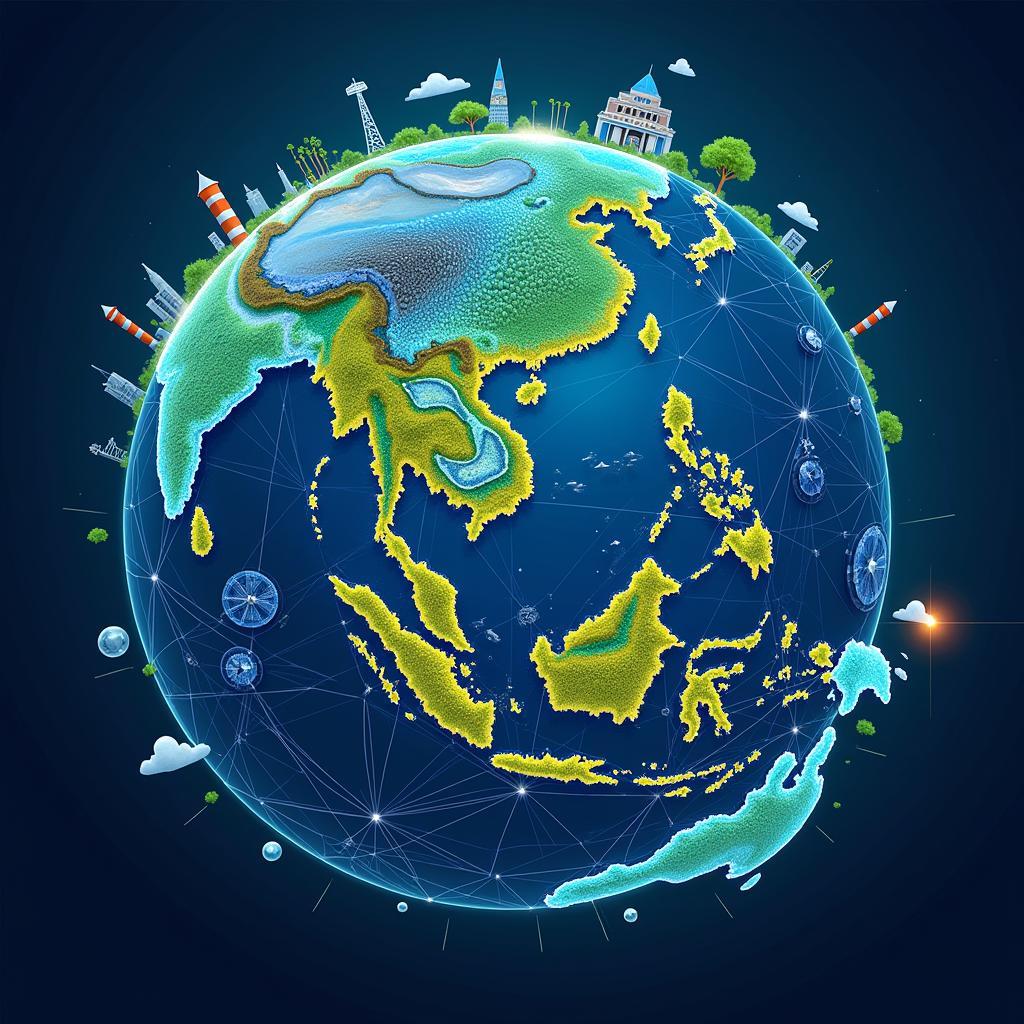The term “ASEAN” often pops up in news headlines and global discussions, but what does it truly stand for and why should it matter to you? “Anu Ang Kahulugan Ng Asean?” simply translates to “What is the meaning of ASEAN?” in Filipino. This question opens the door to understanding a dynamic region brimming with diverse cultures, interconnected economies, and a shared vision for a brighter future.
 ASEAN flag waving
ASEAN flag waving
Delving Deeper than Just a Name: Understanding ASEAN’s Core
ASEAN, short for the Association of Southeast Asian Nations, is more than just an acronym. It represents a regional intergovernmental organization founded in 1967 by Indonesia, Malaysia, the Philippines, Singapore, and Thailand. Over the years, it has expanded to include Brunei Darussalam, Viet Nam, Lao PDR, Myanmar, and Cambodia, forming a ten-member bloc.
At its heart, ASEAN strives to:
- Accelerate economic growth: By fostering collaboration and economic integration, ASEAN aims to create a single market and production base, boosting trade and investment opportunities for its member states.
- Promote social progress: Through initiatives focused on education, healthcare, and social welfare, ASEAN endeavors to improve the lives of its citizens and reduce development gaps within the region.
- Champion cultural development: Recognizing the richness of its diverse heritage, ASEAN actively promotes cultural exchanges and understanding among its member countries.
- Uphold regional peace and security: By promoting dialogue and cooperation on political and security issues, ASEAN strives to maintain stability and prevent conflicts within the region.
Why ASEAN Matters: A Global Perspective
ASEAN’s influence extends far beyond its geographical boundaries. As a collective, it has emerged as a significant player on the global stage, engaging in dialogues and partnerships with world powers.
 ASEAN Summit
ASEAN Summit
The bloc’s strategic location, abundant resources, and growing economic clout make it a vital partner in international trade and investment. Moreover, ASEAN’s commitment to peace, stability, and multilateralism contributes significantly to global security and cooperation.
ASEAN in Action: Realizing the Shared Vision
ASEAN’s commitment to its goals is evident in its numerous initiatives and frameworks. The ASEAN Community Vision 2025 serves as a roadmap for achieving a more integrated and prosperous region. This vision encompasses three pillars:
- Political-Security Community: Focused on fostering peace, security, and good governance within the region.
- Economic Community: Aiming to establish a single market and production base, facilitating seamless trade and investment flows.
- Socio-Cultural Community: Dedicated to building a people-centered community that is resilient, inclusive, and driven by a shared identity.
Through these pillars, ASEAN is actively working towards:
- Eliminating trade barriers: The ASEAN Free Trade Area (AFTA) and other agreements aim to reduce tariffs and facilitate the free flow of goods and services within the region.
- Enhancing connectivity: Infrastructure development projects, such as the Master Plan on ASEAN Connectivity, aim to improve transportation, energy, and digital links within the region.
- Promoting sustainable development: ASEAN is committed to addressing environmental challenges and promoting sustainable development practices.
- Empowering its people: Initiatives focused on education, healthcare, and social welfare aim to improve the lives of ASEAN citizens.
The Future of ASEAN: A Region on the Rise
ASEAN is undoubtedly a region on the rise. Despite facing challenges, its commitment to cooperation, integration, and progress is unwavering. As the bloc continues to deepen its ties and work together, it is poised to play an even greater role in shaping the future of Southeast Asia and the world.
Understanding “anu ang kahulugan ng ASEAN” goes beyond just knowing its definition. It’s about recognizing the potential of this dynamic region and appreciating its journey towards becoming a more integrated, prosperous, and peaceful community.
 People from different ASEAN countries
People from different ASEAN countries
FAQ
1. How many countries are in ASEAN?
ASEAN comprises ten member states: Brunei Darussalam, Cambodia, Indonesia, Lao PDR, Malaysia, Myanmar, the Philippines, Singapore, Thailand, and Viet Nam.
2. What is the main goal of ASEAN?
ASEAN’s primary objective is to accelerate economic growth, promote social progress, foster cultural development, and uphold regional peace and security among its member states.
3. What are the three pillars of the ASEAN Community?
The three pillars are the Political-Security Community, the Economic Community, and the Socio-Cultural Community.
4. How does ASEAN impact the global economy?
ASEAN is a key player in global trade and investment, attracting foreign direct investment and contributing significantly to global supply chains.
5. What are some challenges faced by ASEAN?
Despite its progress, ASEAN faces challenges such as narrowing development gaps, managing territorial disputes, and addressing transnational issues like terrorism and climate change.
Need More Information on ASEAN?
For further inquiries and support, please contact us:
Phone: 0369020373
Email: [email protected]
Address: Thôn Ngọc Liễn, Hiệp Hòa, Bắc Giang, Việt Nam.
Our dedicated customer service team is available 24/7 to assist you.

